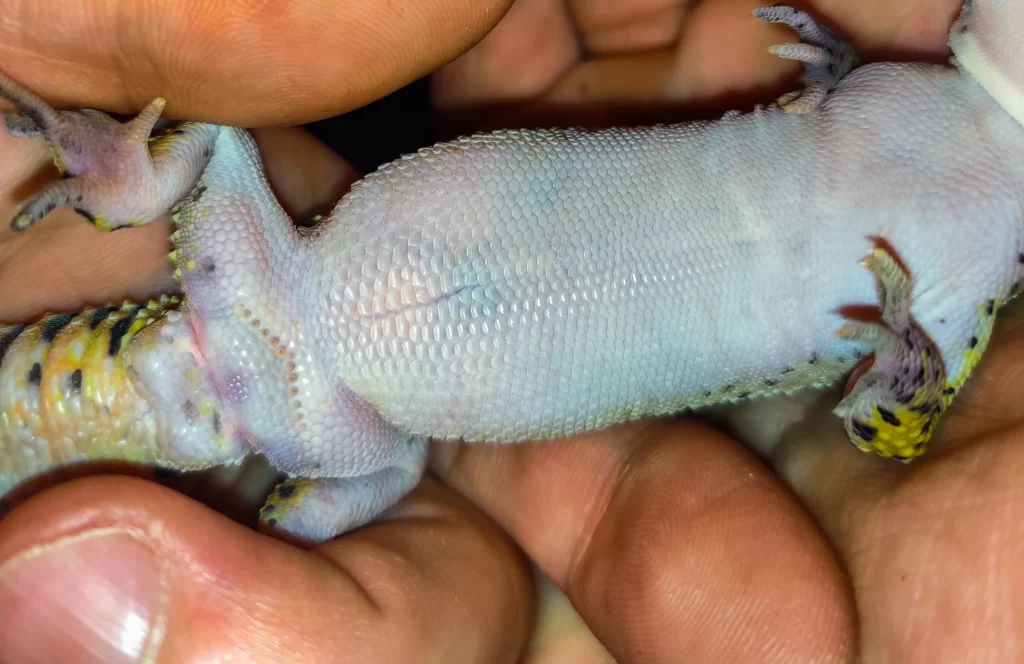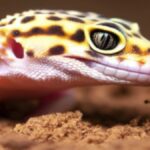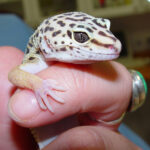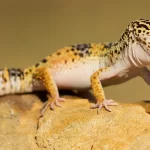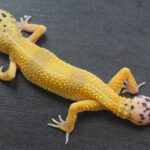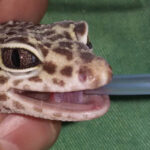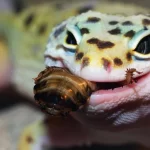Impactions and obstructions are seen when the intestines get blocked. Leopard geckos are often affected by sand impactions.
Introduction to intestinal impactions and obstructions of Leopard geckos
An intestinal impaction is where the intestines get filled up. This prevents food from passing, ultimately leading to intestinal obstruction (or a blockage). It results in pain, inability to pass stool, dehydration and a state of shock. When an obstruction is not rectified in due time, the condition can cause permanent damage to the intestines or even lead to death.
Apart from sand impactions, intestinal obstructions in Leopard geckos can also be caused by faecal impactions and foreign body obstructions(62) (e.g. by ingesting large pieces of the substrate), urate masses, neoplasias and non-neoplastic masses. Foreign body obstructions are considered common in Leopard geckos(62).
In theory, sand and any particulate substrate that is small enough and undigestible can be ingested and cause an intestinal obstruction(32). In the case of faecal impactions, the food was either indigestible or, more likely, the intestines were not able to contract properly. Impactions can also be indicative of chronic (long term) dehydration(42).
Intestinal impactions and obstructions in Leopard geckos are important and often complicated conditions to know about. This is an extensive article discussing sand impactions and their prevention in Leopard geckos, foreign body obstructions, faecal impactions, other causes of impactions and obstructions in Leopard geckos, diagnostics and treatment of impactions and obstructions in Leopard geckos, nutritional secondary hyperparathyroidism and choosing the best substrates for Leopard geckos.
Intestinal impactions and obstructions often lead to, the so-called, wasting syndrome where affected Leopard geckos lose weight and/or stop growing. Common signs in Leopard geckos include anorexia (not eating well or eating at all), lethargy (reduced activity), weight loss (e.g. tail getting thinner), a bloated abdomen, darkened intestines (visible from the belly area) and cloacal eversion(30). The abdominal (belly) area is often hard, or something hard in the form of a tube can be palpated (felt with fingers and hands).
Leopard geckos with obstructions are unable to defecate (pass stool). A Leopard gecko should be passing stool at least once a day. Observant owners will be able to identify a potential obstruction early on by looking at the frequency of defaecating (pooping). Regurgitation, dehydration (seen as a wrinkly skin) and cloacal or colonic prolapse are also be seen in some cases.
Diagnostics and treatment of impactions and obstructions in Leopard geckos are best done under the guidance of a reptile-friendly veterinarian.
Sand impactions in Leopard geckos
Sand impactions are commonly seen in pet Leopard geckos. When sand is ingested and not excreted, it will start to build up and fill the intestines — ultimately leading to a blockage. Whether Leopard geckos need sand in their diets, and how much, is uncertain. It is also not exactly known whether Leopard geckos in the wild eat sand or not, but they are commonly seen doing so in captivity.
Pet Leopard geckos will often eat sand (called geophagia), especially when they suffer from certain mineral deficiencies (then called pica). Leopard geckos with sand impactions are also often seen drinking more water and soaking in their water dish.
Risk factors associated with sand impactions in Leopard geckos include:
- Being kept on sand
- Seeing eating sand
- Seeing sand in the faeces
- Inadequate calcium/vitamin D3 supplementation
- Being smaller (

